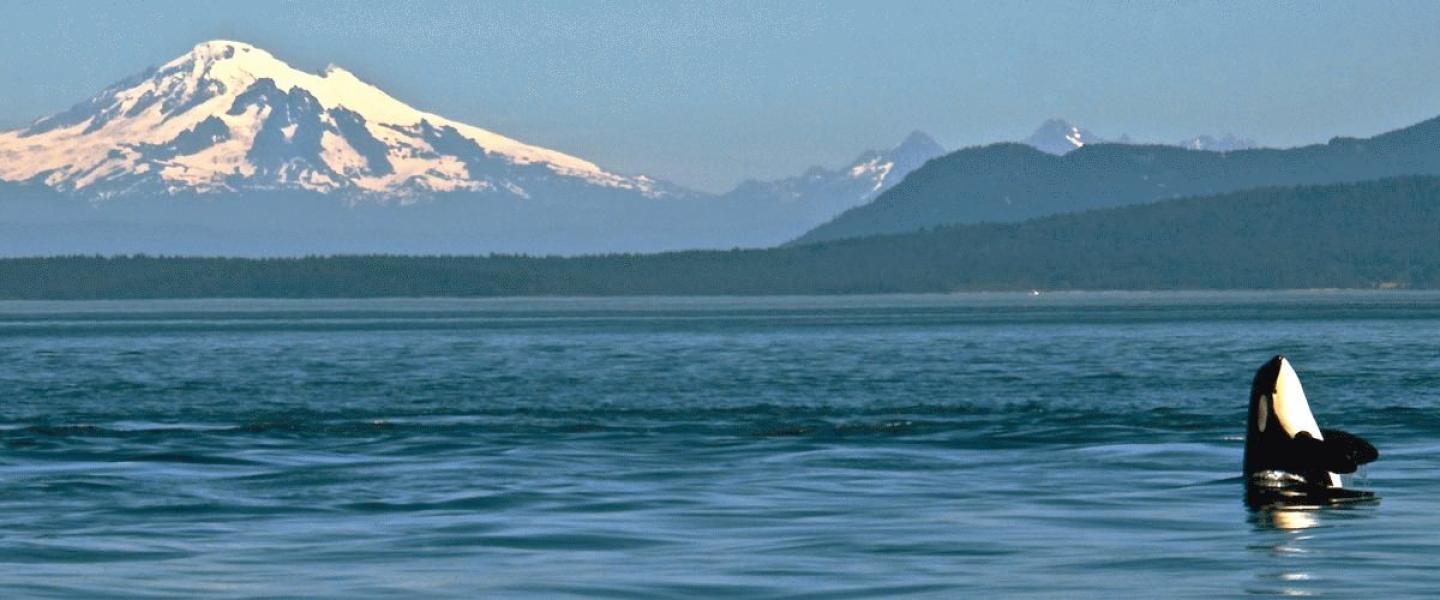
K-pod today! We identified K-21, Cappuccino. Cappuccino was born in 1986 and is a male. He was traveling with a female known as Deadhead, K-27. K-pod has 19 individuals and is the smallest of the three pods that make up the Southern Resident Community of killer whales.
The Southern Resident Killer Whales are a significant population in the Pacific Northwest. SRKWâs have been listed as an Endangered species in both the US and Canada. These resident orcas are often in the San Juan and Puget Sound area during summer months. These animals are considered to be âresidentâ orcas (a distinct form of ocra) and specialize in foraging on fish. They do not eat marine mammals like the âtransientâ orcas. Research has shown that the resident orcas prefer to eat salmon, especially Chinook salmon.
Chinook salmon has also been listed on the Endangered Species List. Salmon is an anadromous fish. They actually leave their natal freshwater streams, migrate to the ocean, they stay there for usually 3 to 5 years on average and then migrate back to their natal stream to spawn. There are many of issues facing these fish: dams, water diversions, habitat destruction, water quality and temperature changes, pollution, predation in fish ladders and over fishing (and thatâs only to name a few).
Chinook salmon needs to be recovered if we want to keep these southern resident orcas around. âItâs all about the salmonâ.
Naturalist Jeannette
The Southern Resident Killer Whales are a significant population in the Pacific Northwest. SRKWâs have been listed as an Endangered species in both the US and Canada. These resident orcas are often in the San Juan and Puget Sound area during summer months. These animals are considered to be âresidentâ orcas (a distinct form of ocra) and specialize in foraging on fish. They do not eat marine mammals like the âtransientâ orcas. Research has shown that the resident orcas prefer to eat salmon, especially Chinook salmon.
Chinook salmon has also been listed on the Endangered Species List. Salmon is an anadromous fish. They actually leave their natal freshwater streams, migrate to the ocean, they stay there for usually 3 to 5 years on average and then migrate back to their natal stream to spawn. There are many of issues facing these fish: dams, water diversions, habitat destruction, water quality and temperature changes, pollution, predation in fish ladders and over fishing (and thatâs only to name a few).
Chinook salmon needs to be recovered if we want to keep these southern resident orcas around. âItâs all about the salmonâ.
Naturalist Jeannette